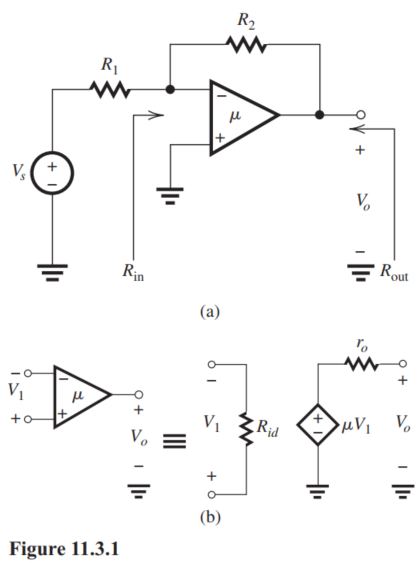
The feedback amplifier shown in Fig. 11.3.1(a) employs the shunt-shunt feedback topology. To see this more clearly and to apply the feedback analysis method, convert the signal source together with the resistance to its Norton's equivalent circuit composed of current source together with a parallel resistance equal to . The amplifier has the equivalent circuit shown in Fig. 11.3.1(b). We wish to investigate the case for which , , and .
(a) Find the circuit and derive expressions for , and . Evaluate these expressions to determine , and .
(b) Find the circuit and derive an expression for . Find the value of .
(c) Find an expression for and its value.
(d) Find the value of the amount of feedback.
(e) Find the closed-loop gain and hence .
(f) Find the value of .
(g) Find the value of .
(h) If changes by , what is the resulting change in ?
Correct Answer:
Verified
Q1: An amplifier with an open-loop gain
Q2: Q4: Q5: The feedback voltage amplifier in Fig. Q6: Figure 11.6.1 (refer to Figure below) Q7: In the circuit of Fig. 11.7.1 Q8: Q9: Unlock this Answer For Free Now! View this answer and more for free by performing one of the following actions Scan the QR code to install the App and get 2 free unlocks Unlock quizzes for free by uploading documents![]()
![]()
![]()
![]()

